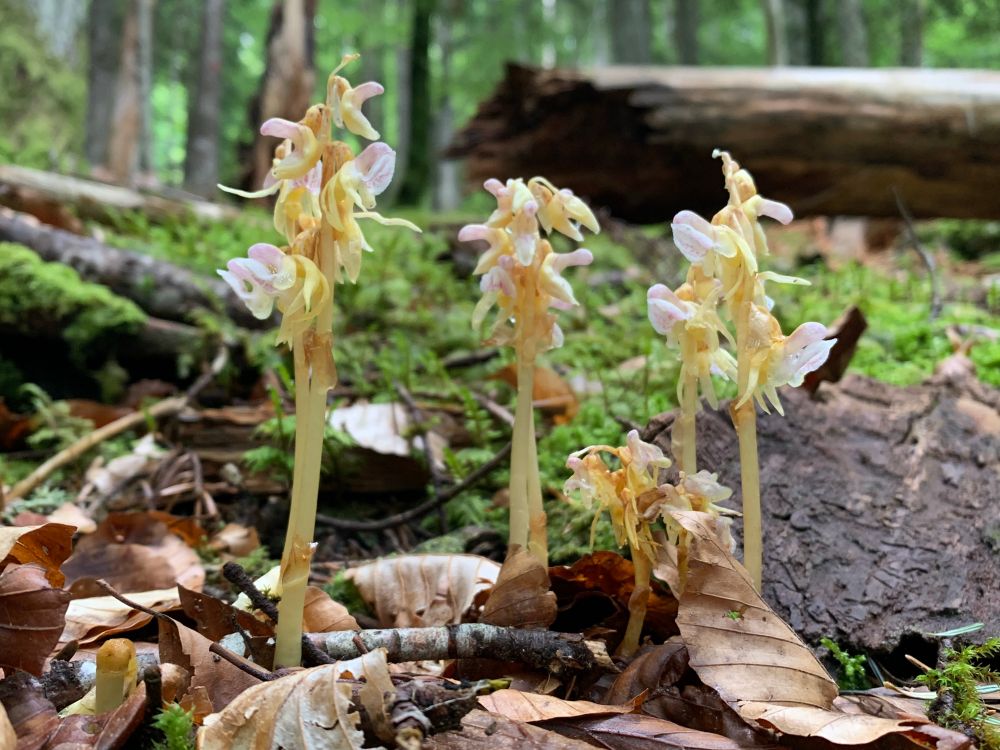



















www.kickstarter.com/projects/ink...

www.kickstarter.com/projects/ink...




Hot on the heels of last week’s self-set Olive Olea europea today’s #NorfolkFloraGroup star find was a self-set Peach Prunus persica!

Hot on the heels of last week’s self-set Olive Olea europea today’s #NorfolkFloraGroup star find was a self-set Peach Prunus persica!







Mentha x verticillata (Whorled Mint) candidate from Cinderford Brook, Forest of Dean. Robust, inflorescence terminated in leaves, stamen included within corolla. @wildflowerhour.bsky.social, have the botanical community moved to bluesky? Must try to re-find folk...



Mentha x verticillata (Whorled Mint) candidate from Cinderford Brook, Forest of Dean. Robust, inflorescence terminated in leaves, stamen included within corolla. @wildflowerhour.bsky.social, have the botanical community moved to bluesky? Must try to re-find folk...
So what is a Red List, and why does it matter? What does this new report tells us about the state of Britain’s flora?

So what is a Red List, and why does it matter? What does this new report tells us about the state of Britain’s flora?
The future of our wonderful plants is in their hands - let's try not to drop the baton before we can hand it over!
www.bbc.co.uk/newsround/ar...
@plantlifeuk.bsky.social

The future of our wonderful plants is in their hands - let's try not to drop the baton before we can hand it over!
www.bbc.co.uk/newsround/ar...
@plantlifeuk.bsky.social

285 taxa have become more threatened.
Critically Endangered up from 35 to 55 taxa, Endangered up from 90 to 117 taxa, Vulnerable up from 220 to 261 taxa 😱☠️
Action needed now! Well done @bsbibotany.bsky.social and partners

285 taxa have become more threatened.
Critically Endangered up from 35 to 55 taxa, Endangered up from 90 to 117 taxa, Vulnerable up from 220 to 261 taxa 😱☠️
Action needed now! Well done @bsbibotany.bsky.social and partners
The 20-year efforts of #BSBImembers & the botanical community gave us #PlantAtlas2020, which provides the evidence base for much of this #GBRedList assessment.
Your #botany records make a difference!
Plants are good indicators of the pressures on all our wildlife - things are not getting better.
More details: markavery.info/2025/11/05/b...

The 20-year efforts of #BSBImembers & the botanical community gave us #PlantAtlas2020, which provides the evidence base for much of this #GBRedList assessment.
Your #botany records make a difference!




26% (up from 23% in 2005) assessed as threatened.
Common Restharrow, Marsh-marigold & Harebell: all Vulnerable.
Alpine Gentian: Endangered.
Work was led by Pete Stroh from @bsbibotany.bsky.social & funded by @naturalengland.bsky.social



26% (up from 23% in 2005) assessed as threatened.
Common Restharrow, Marsh-marigold & Harebell: all Vulnerable.
Alpine Gentian: Endangered.
Work was led by Pete Stroh from @bsbibotany.bsky.social & funded by @naturalengland.bsky.social












